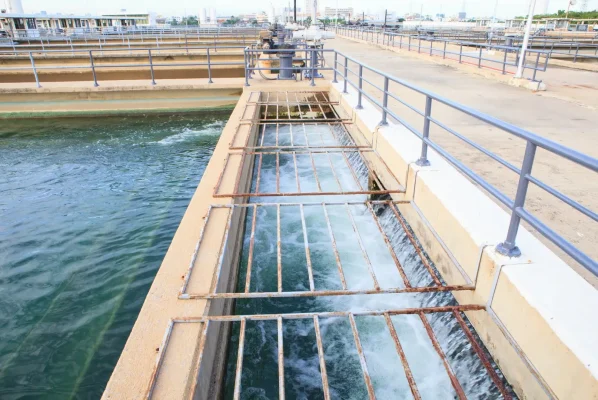| Solutions » Wastewater treatment » How Does a Wastewater Treatment System Work? |
Nội dung
1. Introduction to Wastewater Treatment System
Wastewater treatment systems play an important role in removing pollutants from water before it is released into the environment. Each system is designed to treat different types of wastewater, from domestic wastewater to industrial wastewater. The treatment process usually includes several stages, to ensure that the water meets safety standards.

2. Wastewater Treatment Stages
The wastewater treatment process usually goes through the following main steps:
2.1. Primary Treatment (Mechanical)
This stage helps remove large solid impurities and suspended solids. Important steps include:
- Trash rack: Retains large waste such as leaves, plastic and metal.
- Grit tank: Separates sand and gravel to avoid affecting downstream treatment equipment.
- Primary sedimentation tank: Removes solids that settle to the bottom and grease that floats on the surface.
2.2. Secondary Treatment (Biological)
The goal of this stage is to decompose organic compounds by microorganisms: (Biology)
- Aerotank: Microorganisms use oxygen to decompose organic matter.
- Anaerobic tank: For wastewater rich in organic matter, helps decompose waste without oxygen.
- Secondary settling tank: Sedimentation of excess microorganisms and circulation of activated sludge.microorganisms:(Biology)

2.3. Advanced Treatment (Chemical and Filtration)
In this step, remaining contaminants will be removed:
- Disinfection: Use chlorine, ozone or UV rays to kill harmful bacteria.
- Activated carbon filtration: Removes organic matter that is difficult to decompose.
- Ion exchange and reverse osmosis: Used in industrial wastewater treatment.
3. Popular Technology in Wastewater Treatment Systems
Depending on the type of wastewater, the following technologies can be applied:
- MBR (Membrane Bioreactor) technology: Combining biological treatment and membrane filtration.
- AAO technology: Effective treatment of nitrogen and phosphorus.
- SBR technology: Cyclic biological reaction system, saving space.
- RO reverse osmosis technology: Using high pressure membrane to remove metal ions, salts and dissolved impurities in wastewater.
- Chemical method: Using chemicals to precipitate, neutralize or oxidize pollutants.
- Physical and chemical combination method: Applied in complex wastewater treatment systems, combining sedimentation, filtration and using chemicals to increase treatment efficiency.
4. Factors Affecting Treatment Efficiency
Một hệ thống xử lý nước thải hoạt động hiệu quả phụ thuộc vào:
- Inlet water quality: Wastewater composition and flow.
- Operating conditions: Temperature, pH, oxygen content.
- Periodic maintenance: Equipment inspection and sludge treatment.
5. Kết Luận
Wastewater treatment systems are an important solution to protect the environment. Choosing the right technology and ensuring proper operation will help improve treatment efficiency, reduce water pollution and protect natural resources.



